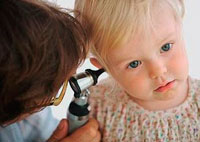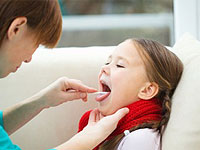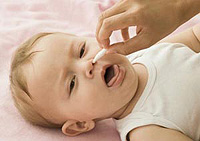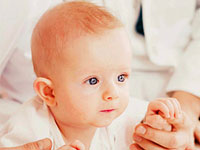In 20-25% of scarlet cases, boys and girls are complicated by otitis for three to five years. Why infection goes to ears than it is fraught? What are the forecasts of otitis under scarletine, symptoms, treatment of this disease?
Content
- Early ultra-shaped scarlatine otitis
- Early necrotic otitis during scarlet
- Late otitis under scarletine: symptoms and treatment

Scarlatina refers to
Pretty heavy infectious diseases caused by beta hemolytic
Streptococco Group A, accompanied by pronounced intoxication, high
Temperature, angina, finely purified skin and various complications
inflammatory character. Inflammation of almonds and pharynx and nasopharynx often
goes to the hearing body, where infection gets like through an auditory pipe, so
and with blood flow.
Most often doctors
Faced with cases of such a disease like Scarlatina in boys and girls of three to five years,
And 20-25% of the children of Scarlatina is complicated by otitis.
Otitis at Scarlatin
may occur as at the beginning of the disease when inflammatory changes in
The nasopherler reaches a heyday and during the recovery period when symptoms
Inxications go on a decline and skin begins to peel.
Depending on the
The development time and nature of the processes of otitis during scarletin are:
-
Early
Super alloy, -
Early
necrotic, - Latest.
Early ultra-shaped scarlatine otitis
Fortunately, this form
Otitis is quite rare with such a disease like scarlet; Symptoms and treatment of its extremely severe.
Otitis occurs on the second or third day from the beginning of the scarletna, most often with her
severe hypertoxic form. Infection gets hematogenic way in average
Ear where it causes the strongest inflammation.
Since symptoms
intoxication during this period of scarlet development expressed extremely acute,
Manifestations of early otitis for some time remaining their parents.
High body temperature up to 39-40O C, severe general condition
The child mask the symptoms of the inflammation of the middle ear, especially since he has
The principle there are no external signs, and the processes occurring inside the processes
Even attentive observer.
Infection quickly
applies to the internally ear to the surrounding bone tissue, on brain
shells and further on the nervous fabric, causing the development of purulent meningoencephalitis
and purulent brain tissue melting. Most often it leads to death
Child, in exceptional cases, recovery comes, but hearing and work
The nervous system is not restored to the fullest, deafness remains and
Loss of some brain functions.
Early necrotic otitis during scarlet
This form Otita
Classify as a severe complication of scarlet. Symptoms and treatment, just like in
The case with the otitis described above can be called heavy, however
Diseases are more often less tragic.
The beginning of otitis is not so
Fast, and parents have time to notice his signs against the background of scarlet symptoms. Boy or girl
cease to hear addressed to them, complain about dizziness, nausea,
Often there is vomot. Looking around, you can see the child with Nistagm or
Spontaneous twitching eyeballs.
Non Otitis
accompanied by the destruction of the middle ear structures and quickly leads to spontaneous
Total perforation of the eardrum. Begins from the auditory passage
Dark yellow pus media with a flicker smell. Often through a hole in
fragments of destroyed auditory bones fall out.
Treatment — Antibiotics
and surgical intervention.
Late otitis under scarletine: symptoms and treatment
Late Otitis
Scarlatin meets more often than other forms of the disease. It develops in the period
recovery, his symptoms and flows do not differ from those with a banal
Acute average otitis in children.
The disease begins
with increasing body temperature, deterioration of the general condition of the child, appearance
Boles in the ear — harsh, unbearable, in the temple and the dark. Arise
Convenience and noise in the ear, rumor dulled.
In a few hours
or two-three days accumulated in the ear pus breaks the eardrum.
Together with this, the child's condition is improving, the temperature decreases, the pain subsides
in ear. From the ears, the pus is bezed with blood admixture. Melting
It lasts five to seven days, then stops, the scarring begins
Drumpatch. The forming scar restricts its mobility that
Hearing decline. Often Otitis takes a chronic course that leads
to the formation of adhesions in the middle ear, partial and even full deafness on one ear.
Treatment of this form
Otitis does not differ from this with the usual average otitis.









